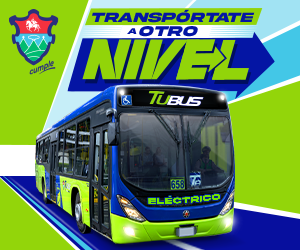The killing of 26 people in an unregistered drug rehabilitation center in central Mexico is the deadliest such attack in a decade and has led to calls for change in a prosperous state that has become a cartel battleground.
Ricardo Ortiz, mayor of the city of Irapuato in Guanajuato state, raised the death toll from 24 Thursday after two of the seven people injured in the attack died. Ortiz said the other five are out of danger.
Ortiz said there were six or seven attackers; they pulled up in two vehicles at the modest two-story house on the outskirts of Irapuato. Apparently, the attackers shot every male at the rehab center, letting only the females go. Ortiz said some residents may have escaped when the attack began.
Rosa Alba Santoyo, three of whose sons were killed in the attack, said a female addict at the center said the gunmen told the women to get out, before gunning down the men.
Santoyo said two of her sons, construction workers aged 29 and 39, were at the center because they had problems with drugs. Her youngest son, 27, had been at the center previously and recovered, and had only returned Wednesday to bring his brothers soft drinks when the gunmen killed all three of them.
Two of her sons were in a photograph of the massacre on the front page of the local newspaper. Their bullet-ridden bodies lay next to the other victims, prone on the floor of the center amid piles of blankets. They were apparently made to lie down before being massacred. Her youngest son was found shot to death at another spot.
Santoyo, who works at a factory that make cleaning products, said that up until a month or two ago, there had been a military post across the street from the center, but that for some reason it had been withdrawn. Mexico’s army and national guard have been given a number of tasks in dealing with the coronavirus pandemic that may have required those troops.
A woman who lives near the center, Mary Moreno, said the gunmen simply burst into the rehab and started shooting. Guanajuato, a prosperous industrial hub with foreign auto plants, has become Mexico’s most violent state, a situation the government seems unable to remedy.
“The government doesn’t do anything anymore,” said Moreno.
Ortiz, the mayor, said that while there are still army and national guard posted in the city, “just their presence is not enough, as long as there is no real strategy to combat organized crime in a more effective way.”
The state is the scene of a bloody turf battle between the Jalisco New Generation Cartel and a local gang – the Santa Rosa de Lima Cartel – and the state has become the most violent in Mexico.
No motive was given in the rehab center attack, but Gov. Diego Sinhue Rodríguez Vallejo said drug gangs appeared to have been involved.
“The violence generated by organized crime not only takes the lives of the young, but it takes the peace from families in Guanajuato,” the governor wrote. Rodríguez Vallejo belongs to the conservative opposition party National Action, and the state’s crime problem has been the subject of political divisions.
President Andrés Manuel López Obrador said Thursday that “changes must be made to solve Guanajuato’s problem, because the circumstances demand it.”
“The problem was allowed to grow, it grew a lot and we have to see if there was some sort of cooperation, criminal conspiracy between the criminals and officials,” López Obrador said, without specifying who he was accusing.
There have been persistent reports that state authorities who once tolerated the Santa Rosa de Lima gang turned in the recent years to allowing the Jalisco cartel to enter the state in hopes they would the end the local gang’s systematic extortion of businesses.
But while Santa Rosa is a less sophisticated gang that started out with robbing freight trains and stealing fuel from government pipelines, it has proved tougher than expected for Jalisco to crush, in part because Jalisco’s rival, the Sinaloa Cartel, may be contributing money and guns to Santa Rosa.
Mexican drug gangs have killed suspected street-level dealers from rival gangs sheltering at such facilities in the past. It was one of the deadliest attacks on a rehab center since 19 people were killed in 2010 in Chihuahua city in northern Mexico. More than a dozen attacks on such facilities have occurred since then.
Mexico has long had problems with rehab centers because most are privately run, underfunded and often commit abuses against recovering addicts. The government spends relatively little money on rehabilitation, often making the unregistered centers the only option available for poor families.
Ortiz said there are almost 30 unregistered rehab centers in Irapuato. He said some function “as fronts for the cartels.”
Cartels sometimes use the centers to hide addicts and dealers who face attacks from rivals on the streets. Gangs also sometimes use the centers to recruit addicts as dealers. (AP)






































